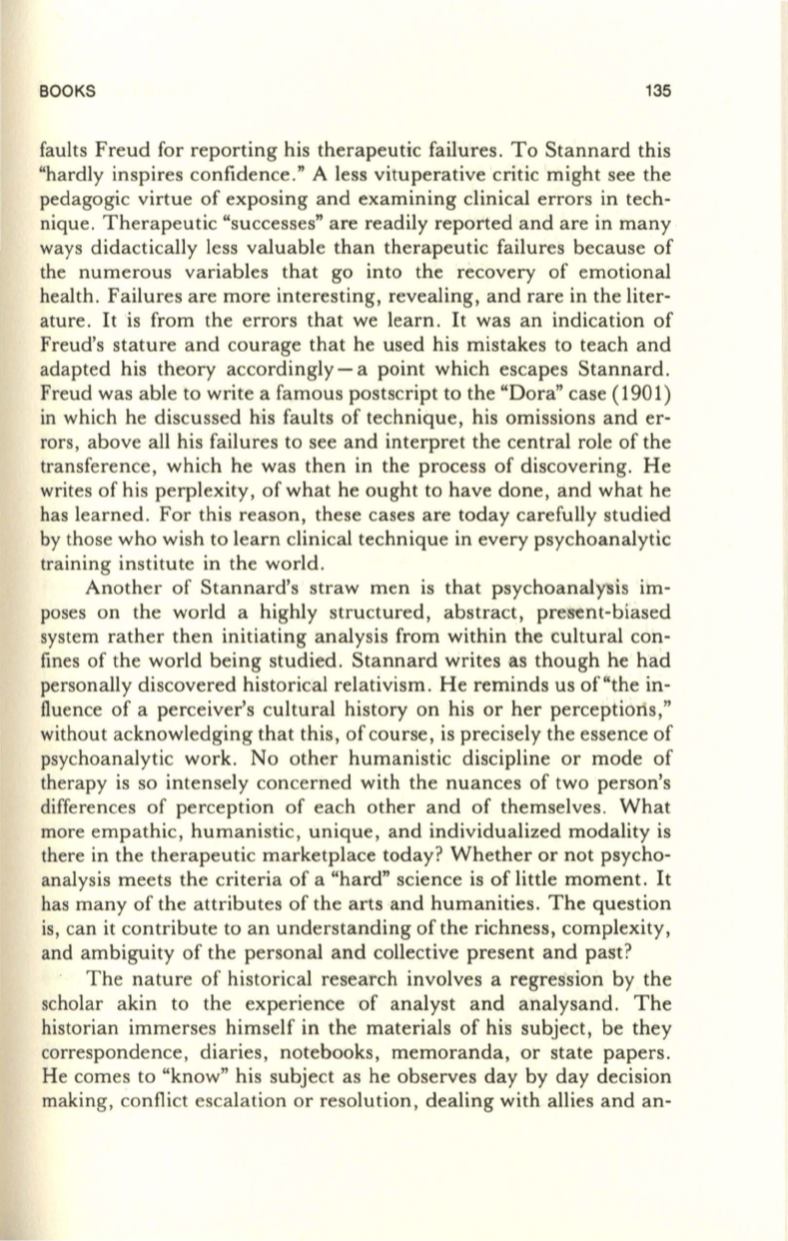
BOOKS
135
faults Freud for reporting his therapeutic failures. To Stannard this
"hardly inspires confidence ." A less vituperative critic might see the
pedagogic virtue of exposing and examining clinical errors in tech–
nique. Therapeutic "successes" are readily reported and are in many
ways didactically less valuable than therapeutic failures because of
the numerous variables that go into the recovery of emotional
health. Failures are more interesting, revealing, and rare in the liter–
ature .
It
is from the errors that we learn . It was an indication of
Freud's stature and courage that he used his mistakes to teach and
adapted his theory accordingly-a point which escapes Stannard .
Freud was able to write a famous postscript to the "Dora" case (1901)
in which he discussed his faults of technique, his omissions and er–
rors , above all his failures to see and interpret the central role of the
transference , which he was then in the process of discovering. He
writes of his perplexity, of what he ought to have done, and what he
has learned. For this reason, these cases are today carefully studied
by those who wish to learn clinical technique in every psychoanalytic
training institute in the world .
Another of Stannard's straw men is that psychoanalysis im–
poses on the world a highly structured, abstract, pre-sent-biased
system rather then initiating analysis from within the cultural con–
fines of the world being studied . Stannard writes as though he had
personally discovered historical relativism. He reminds us of "the in–
fluence of a perceiver's cultural history on his or her perceptions,"
without acknowledging that this , of course, is precisely the essence of
psychoanalytic work . No other humanistic discipline or mode of
therapy is so intensely concerned with the nuances of two person's
differences of perception of each other and of themselves . What
more empathic, humanistic, unique, and individualized modality is
there in the therapeutic marketplace today? Whether or not psycho–
analysis meets the criteria of a "hard" science is of little moment. It
has many of the attributes of the arts and humanities. The question
is, can it contribute to an understanding of the richness, complexity,
and ambiguity of the personal and collective present and past?
The nature of historical research involves a regression by the
scholar akin to the experience of analyst and analysand . The
historian immerses himself in the materials of his subject, be they
correspondence , diaries, notebooks , memoranda, or state papers.
He comes to "know" his subject as he observes day by day decision
making, conflict escalation or resolution, dealing with allies and an-


